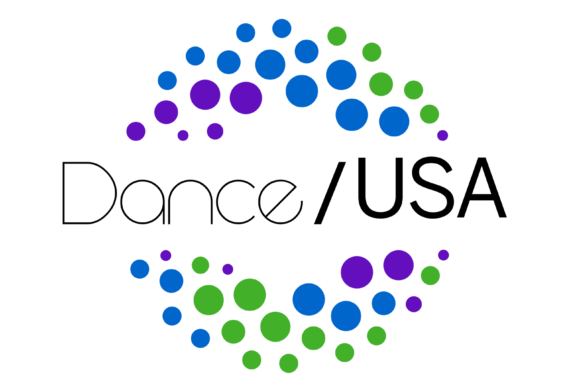A Model for Equity: Diversity and Inclusion
Lack of clarity on what diversity and inclusion mean in our current climate is a great way of not realizing either of them as a goal. Is diversity the same thing as inclusion? If we manage to create an environment of inclusion, does that mean we have diversity? Is it true that we can have diversity without any inclusion? And, finally, perhaps the most powerful question, why does it matter that we achieve either of these equitable goals? Read more in this essay from the National Association of Latino Arts and Cultures.
The Utility of the Creative Process
The average dancer leaves performing by their mid-30s, often facing the critical question: What’s next?
Until
recently, the answer has been all but clear. It
would seem obvious that decades of intense discipline, long hours of
practice and deep passion and commitment for the craft would produce a
valuable human being with a skill-set worthy of a potent and fulfilling
second career. Yet, many retired ballet dancers relegate themselves to
becoming teachers of dance – a noble endeavor that only some genuinely
enjoy – or transition to a similar profession utilizing a portion of
their physical intelligence (bodywork, Pilates, physical therapy, etc.)
What can dancers do beyond dance? Read what dancer and arts executive John Michael Schert has to say on this topic.
Dance/USA’s Fall Forecast: Policy and Legislative Update
Brandon Gryde, Dance/USA’s director of government affairs, gives us the scoop on the legislative issues dancers, choreographers, company managers, board members and executive directors should be watching in Congress this fall.
LEADERSHIP CORNER: Andrea Lodico Welshons, Executive Director, KEIGWIN + COMPANY
From the Green Room‘s Leadership Corner continues with a conversation with KEIGWIN + COMPANY’s Executive Director Andrea Lodico Welshons. Read about how Welshons and Artistic Director Larry Keigwin view their working relationship as symbiotic and collaborative and Welshon’s recipe for relatively accelerated, high-visibility growth for the company.
Dance/USA 2015 Ernie Awardee Linda Shelton
Linda Shelton receives the 2015 Dance/USA “Ernie” Award for
“an individual working ‘behind the scenes’ within the infrastructure of
the dance field. A long-time arts administrator, Shelton has a long-view of the dance field through her extensive work with the Joyce Theater in Manhattan’s Chelsea neighborhood. A current trustee and former chair of Dance/USA’s board, Shelton has spent a career serving the non-profit concert dance world. Listen in as dance writer and scholar Mindy Aloff and Shelton talk about her work.
Leadership Corner: C. Brian Williams, Founder/Executive Director, Step Afrika!
Leadership Corner continues with this conversation featuring Brian Williams, founder and director of Step Afrika! the Washington, D.C.-based troupe dedicated to bringing step dance to the concert state here in the United States and around the world. Williams says: “First came the artistic opportunity, then came the business. For me, the
question was, ‘How do I make this happen? What do I need to do and what
are the first steps?’ I wanted to share stepping with the world. Making money really wasn’t the idea. If money had been the primary
motivation, then I am sure I wouldn’t have gotten too far. Instead … it
was the idea to step all across the continent of Africa, learn
traditional dances, and explore the nexus between stepping and
traditional African culture that really motivated me to launch Step
Afrika! The question became: ‘How do I make that happen? And what are
the opportunities?’” Read on for more.
Casing Out a Case Study
From the Green Room speaks with Pacific Northwest Ballet’s Ellen Walker about the company’s participation in the Wallace Foundation’s audience engagement study and grant. Walker takes us through the process she and her marketing and executive team followed to attract and build a new target audience — teenagers. Read on to learn more about the research component and strategies Walker and PNB took to attract young people.
Attracting a Crowd
The October 2014 study published by The Wallace Foundation, entitled The Road To Results: Effective Practices For Building Arts Audiences, seeks to take some of the guesswork out of choosing the right answers to your organization’s particular audience-building riddles by examining the examples of ten arts organizations. What can you learn from this report? Read on here.
NEA Report: Reading Between the Lines
Every decade the National Endowment for the Arts conducts large-scale quantitative research on
audiences, providing a compendium of longitudinal information on
audience behavior. How do we interpret and use this wealth of
information? What do you need to know to participate in this ongoing conversation in the field? Read on here for more.
Preparing for the Unthinkable
How does an organization plan for a tragedy? You really can’t. You plan for your
organization’s response to one by putting into place the
information, guidelines, training, and materials needed to help company
leadership and staff deal with a most difficult and often chaotic time.
Writer Steve Sucato contacted Sarasota Ballet, Alvin Ailey American Dance
Theater, Culture Shock Dance Chicago, and Chicago Dance Crash about those company members they lost recently. Their
insight and advice may prove useful in preparing your organization for
the unthinkable.


